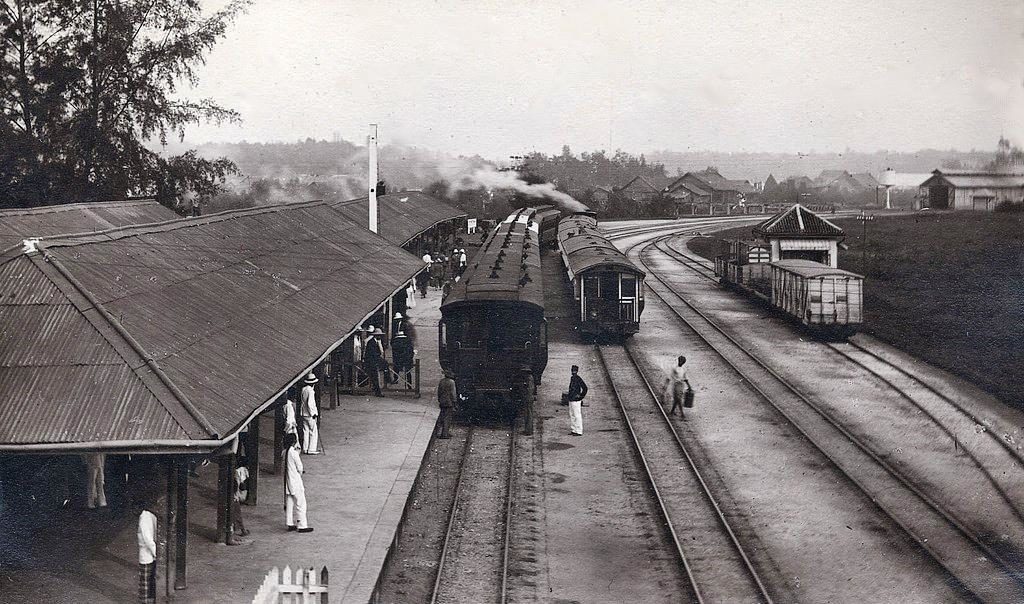The History of Malaysia’s Rail System

It is unbelievable to think that our rail system began over 135 years ago, on June 1, 1885. Its main purpose was to transport tin. The rail stretched only 13 km from Port Weld (Kuala Sepetang) to Taiping, Perak. It was then operated by the Malayan Railway, which is now better known as Keretapi Tanah Melayu Bhd (KTMB). In 1886, another line was expanded to Kuala Lumpur and Port Swettenham (Port Klang) and in 1891, a new line connected between Seremban and Port Dickson and Teluk Anson to Tapah Road.
In 1896, the Federated Malay States Railway was created and the operations of all four lines were merged and the trains were expanded to the public with the creation of other lines interconnecting states such as the West Coast Line – connecting Penang and Johor – and the East Coast Line – connecting Gemas and Bahau. In 1923, the Johor-Singapore Causeway opened and connected the Singapore rail network then, to the rest of Malaya.
In the beginning, traditional steam technology powered the KTM locomotives. To increase efficiency, it was then updated in 1957 to diesel-powered trains. Then in 1995, KTMB started operations with electric commuters, which increased the effectiveness of commuting between Klang, Selangor and Seremban, Negeri Sembilan.
Lighter rail transport was launched in 1996 to shuttle people swiftly in the Klang Valley. This light rail transit (LRT) was named Sistem Transit Aliran Ringan (better known as Star LRT). It spanned 17 km with 25 stop stations from Sentul Timur, Ampang and Sri Petaling. In conjunction with Malaysia hosting the Commonwealth Games in 1998, the Bukit Jalil station became one of the most popular routes as it is located at Bukit Jalil Stadium Complex, easing the traffic of people to the centre of the event.
Alongside this, a second light rail transport was created under the name of Projek Usahasama Transit Ringan Automatik Sdn Bhd (Putra) to complement the Star LRT. It featured from north of Gombak to the south of Kelana Jaya and became fully operational in 1999. The Putra LRT covered 28.7 km and was at that time, the longest automated driverless train system in the world, according to Prasarana Malaysia Bhd President and Group CEO Muhammad Nizam Alias. In 2002, Prasarana took over the operations of the LRT under their rail subsidiary, Rapid Rail Sdn Bhd. In the process, they renamed Star LRT as the LRT Ampang Line and LRT Sri Petaling Line, while Putra LRT is now the LRT Kelana Jaya Line.
In 2016, the lines were extended to 46.4 km, with the Sri Petaling lines stretching to Subang Jaya and the Kelana Jaya lines to Puchong. These two lines also share a common south terminal which is Putra Heights. Additionally, Rapid Rail also operates and owns the monorail system in the heart of Kuala Lumpur, spanning 11 stations in the city centre.
Their latest operating system of Prasarana, through Rapid Rail is the mass rapid transit (MRT) system, MRT Kajang Line, which runs from Sungai Buloh- Kajang. Their next expected operation is the MRT Putrajaya Line (Sungai Buloh-Serdang-Putrajaya), Currently, the first phase (Kwasa Damasara to Kampung Batu) is anticipated to launch July 2021. The second phase is expected to be fully completed and operational in January 2023.
The development of the rail system in Malaysia continues with upcoming projects such as the LRT3, MRT3, and the East Coast Rail Link (ECRL) and the KL-Singapore High-Speed Rail (HSR). This will stretch our country’s rail tracks over 3,000km, showcasing the tremendous transformation especially looking back to where we started in 1885. The rail system is crucial to the growth of the economy, as well as the prosperity of the people utilising it as through seamless connectivity, economic and societal benefits will flourish.

